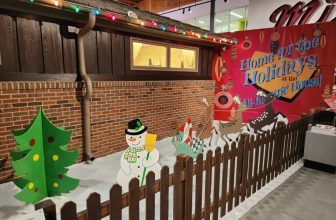[In the summer
of 1945, Nazi scientists began arriving in the United States, recruited to
work in the US government and eventually
its space program as part of Operation
Paperclip. But they weren’t the first nor the only American Nazis by any
means, and this week I’ll AmericanStudy a handful of others, leading up to a weekend
post on an interesting and fraught recent cultural representation of Paperclip.]
On three
telling sides to a February
1939 Nazi rally in New York City.
1)
Organizers: Thanks to prominent individual figures
like the three on whom I’ll focus tomorrow (Henry Ford, Charles Lindbergh, and
Father Coughlin), I think Americans have a general sense that there was support
for Nazis in 1930s America. But that support was also organized, and one
of the chief such national organizations, the German American
Bund, was the force behind the Madison Square Garden rally. While the
Bund was paralleled by other pro-Hitler organizations in the period like the Free Society
of Teutonia and the Friends of
the New Germany, it seems to me that the Bund were also singular in their desire
to wed these pro-Nazi Germany sentiments with direct appeals to mythic images
of American identity and patriotism (on which more in item 2). And the rally’s
two keynote speakers reflect the Bund’s own multi-national, immigrant origins
(not unlike America’s, if far more fully European): Bund leader Fritz Julius Kuhn was a
German immigrant who had become a naturalized American citizen in 1934; while
Bund secretary and Kuhn’s right-hand man James Wheeler-Hill was a
Russian (Latvian) national and recent immigrant known as “the boy orator of the
Bund.”
2)
George Washington: The rally’s February 20th
date was chosen very specifically—it was George Washington’s birthday, and the stage featured a
portrait of Washington flanked by both American flags and Nazi flags/swastikas.
After the rally opened with a performance of “The Star-Spangled Banner,”
Wheeler-Hill’s introductory
speech proclaimed that “If George Washington were alive today, he would
be friends with Adolf Hitler.” In my book Of Thee I Sing: The Contested History of
American Patriotism, I argue that celebratory patriotism (like
the communal ritual of standing for and singing the anthem) has throughout
American history too often turned into mythic patriotism, the creation of myths
about our history and identity that are generally used to exclude particular
groups from the America being embraced (and to define those groups as un- and
even anti-American). So it’s no coincidence that in Kuhn’s concluding speech,
he argued that “The Bund is open to you, provided you are sincere, of good
character, of white gentile stock, and an American citizen imbued with
patriotic zeal.”
3)
Protesters: That speech of Kuhn’s did not go
off smoothly, however—it was interrupted when Isadore
Greenbaum, a 26-year-old Jewish American US Navy veteran from Brooklyn,
charged the stage; Greenbaum was attacked by Nazi guards, pulled away by
police, and charged with disorderly conduct (for which he paid a $25 fine to
avoid a 10-day jail sentence). He wasn’t the least bit apologetic, later stating, “Gee,
what would you have done if you were in my place listening to that s.o.b.
hollering against the government and publicly kissing Hitler’s behind while
thousands cheered? Well, I did it.” Nor was he alone, as an estimated 100,000
anti-Nazi protesters gathered outside
the Garden, dwarfing the 20,000 or so Nazi sympathizers inside. The
protesters featured World War I veterans, members of the Socialist Workers
Party, and countless other organizations and communities. This inspiring group
in no way mitigates the troubling realities of the rally and its reflection of
widespread American support for Hitler and the Nazis; but it does remind us
that 1930s American patriotism, like every other element of our society and history,
was deeply contested.
Next
NaziStudying tomorrow,
Ben
PS. What
do you think? Other histories or stories you’d highlight?






